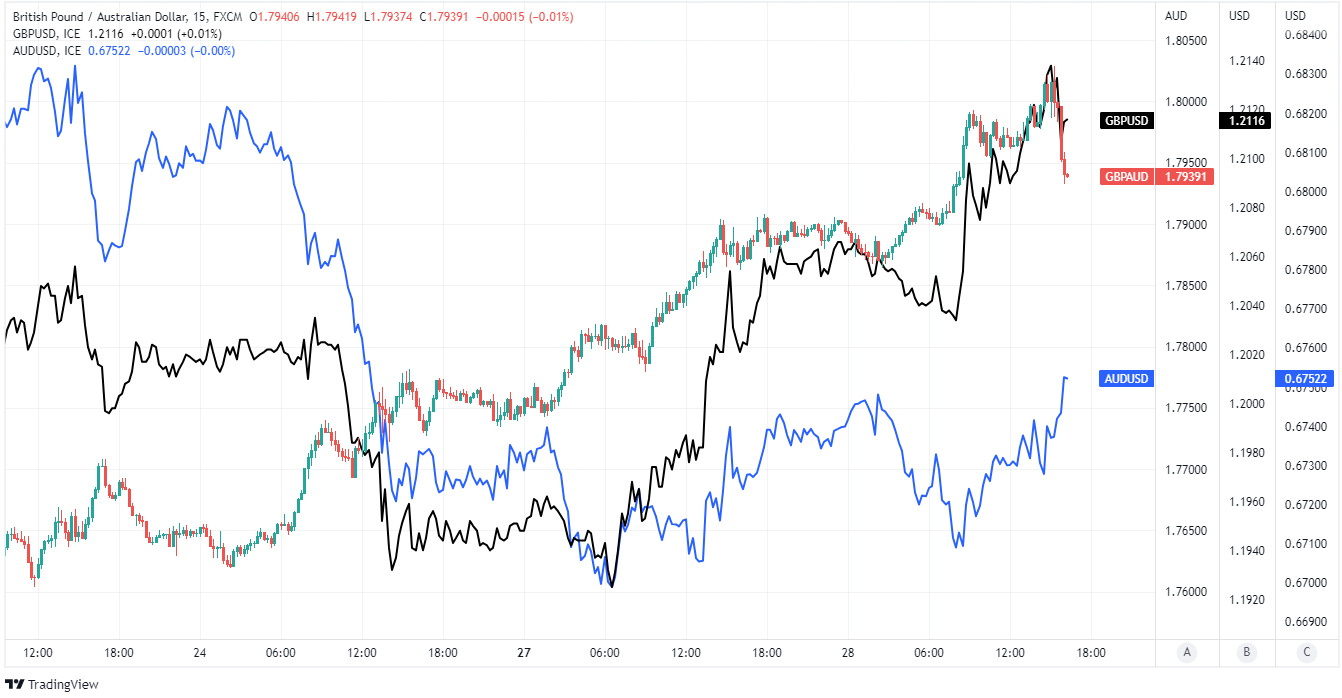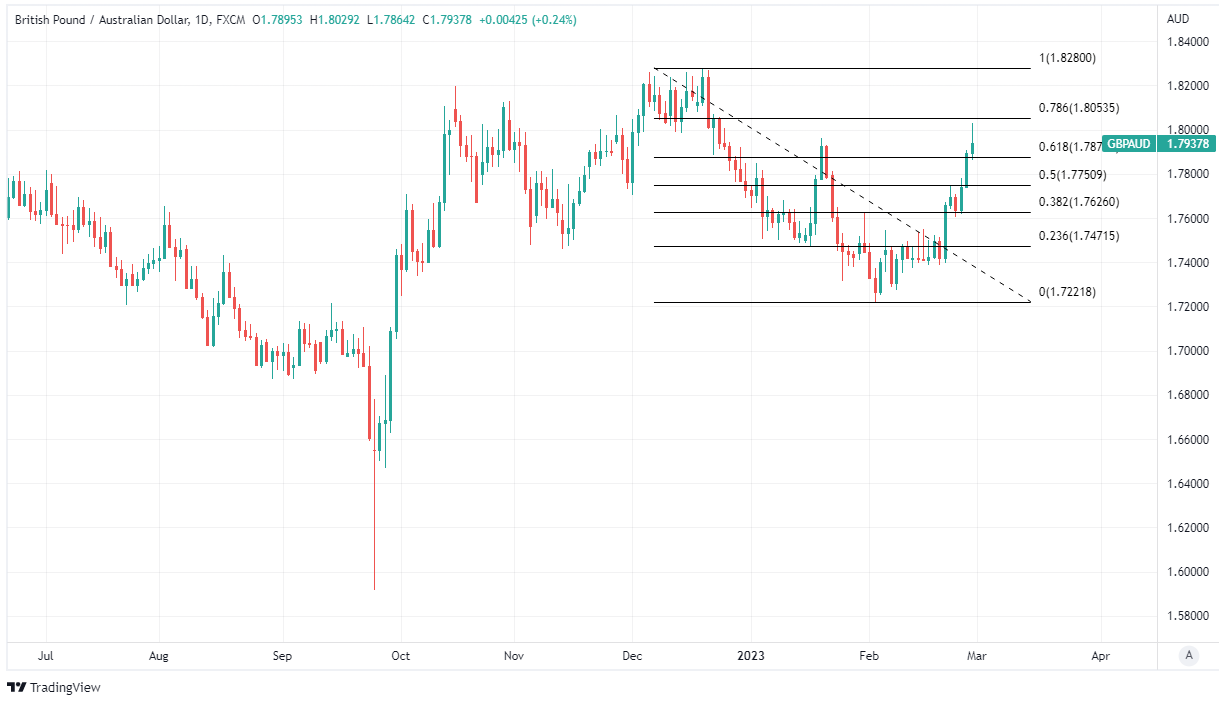Australian Dollar Stalls Pound, GBP/AUD Setback Risks Could Yet Abound
- Written by: James Skinner
"The arithmetic of our 0.8% forecast is +0.3% and a net positive 0.5ppts from net exports (+1.1ppts) and total inventories (-0.6ppts)" - Westpac

Image © Adobe Images
The Pound to Australian Dollar exchange rate reached some of its highest levels since December early in the new week but slipped from the summit of its latest peak as the market looked ahead to Wednesday's publication of the January inflation figures and final quarter GDP data.
Australia's Dollar rose to outperform other currencies on Tuesday with momentum picking up after U.S. Dollar exchange rates eased from recent highs in North American trade but the genesis of the rebound may have been better-than-expected local economic figures released much earlier.
"AUD was little impacted by the Australian economic data," says Carol Kong, an economist and currency strategist at Commonwealth Bank of Australia.
"We expect higher interest rates will cause a material slowdown in household spending growth this year that will encourage the RBA to soon stop its tightening cycle," Kong and colleagues write in a Tuesday research briefing.
Retail sales rebounded smartly for the month of January while the final quarter current account surplus leapt to reverse much of its third quarter decline but more important for the Australian Dollar outlook is likely Wednesday's release of the latest inflation and GDP figures.
Above: Pound to Australian Dollar rate shown at 15-minute intervals alongside GBP/USD and AUD/USD.
Compare GBP to AUD Exchange Rates
Find out how much you could save on your pound to Australian dollar transfer
Potential saving vs high street banks:
A$48.75
Free • No obligation • Takes 2 minutes
"The AUD remains below USD0.68 despite the DXY largely reversing last Friday’s gains to finish back below 105. The GBP was one of the best G10 performers overnight," says Felicity Emmett, an economist at ANZ.
"Commodities sentiment remains fragile amid concerns of further monetary tightening by central banks. This is being partly offset by the economic recovery in China," Emmett and colleagues write in Tuesday market commentary.
The consensus among economists suggests Australian inflation will likely fall from an annualised 8.4% to 8.1% for January on Wednesday but its far from clear in which direction the balance of risks points after the prior report revealed a surprise increase for the month of December.
Most advanced economy statistics offices reported falling inflation for the month of December and this was remarked upon by Reserve Bank of Australia (RBA) Governor Philip Lowe during recent testimony to lawmakers in Canberra.
"I know it's really hard for people to pay more on their mortgages, but it will be harder still if inflation gets too high and stays too high. It will mean higher interest rates and more unemployment. It's hard for people to understand that, because we haven't been in that world for 30 years," the governor also said.
Above: Pound to Australian Dollar rate shown at daily intervals with Fibonacci retracements of December downtrend indicating possible areas of technical resistance for Sterling. Click image for closer inspection. (If you are looking to protect or boost your international payment budget you could consider securing today's rate for use in the future, or set an order for your ideal rate when it is achieved, more information can be found here.)
"It's a critical issue because the pool of excess savings in Australia is as large as anywhere in the world. It is the pool that was built up during the pandemic. It's more than 20 per cent of one year's household disposable income. So there's a huge pool of excess savings. It's not evenly distributed," Lowe also later added.
Separately, the Australian Bureau of Statistics is set to publish its initial estimate of GDP growth in the final quarter, which saw retail sales falling into year-end while the Chinese economy reopened to much fanfare among commodity resource prices at the international level.
That might mean finely balanced risks around Wednesday's GDP number, which the consensus suggests will show GDP growth of 0.7% for the period.
"We have rounded up to 0.8%qtr, 2.8%yr – upgraded from 0.7%qtr. This incorporates the updates on inventories and net exports. The arithmetic of our 0.8% forecast is +0.3% and a net positive 0.5ppts from net exports (+1.1ppts) and total inventories (-0.6ppts)," says Andrew Hanlan, an economist at Westpac.
A cocktail of stronger growth and stubborn or otherwise higher inflation would potentially support a furtherance of Tuesday's Australian Dollar rebound.






